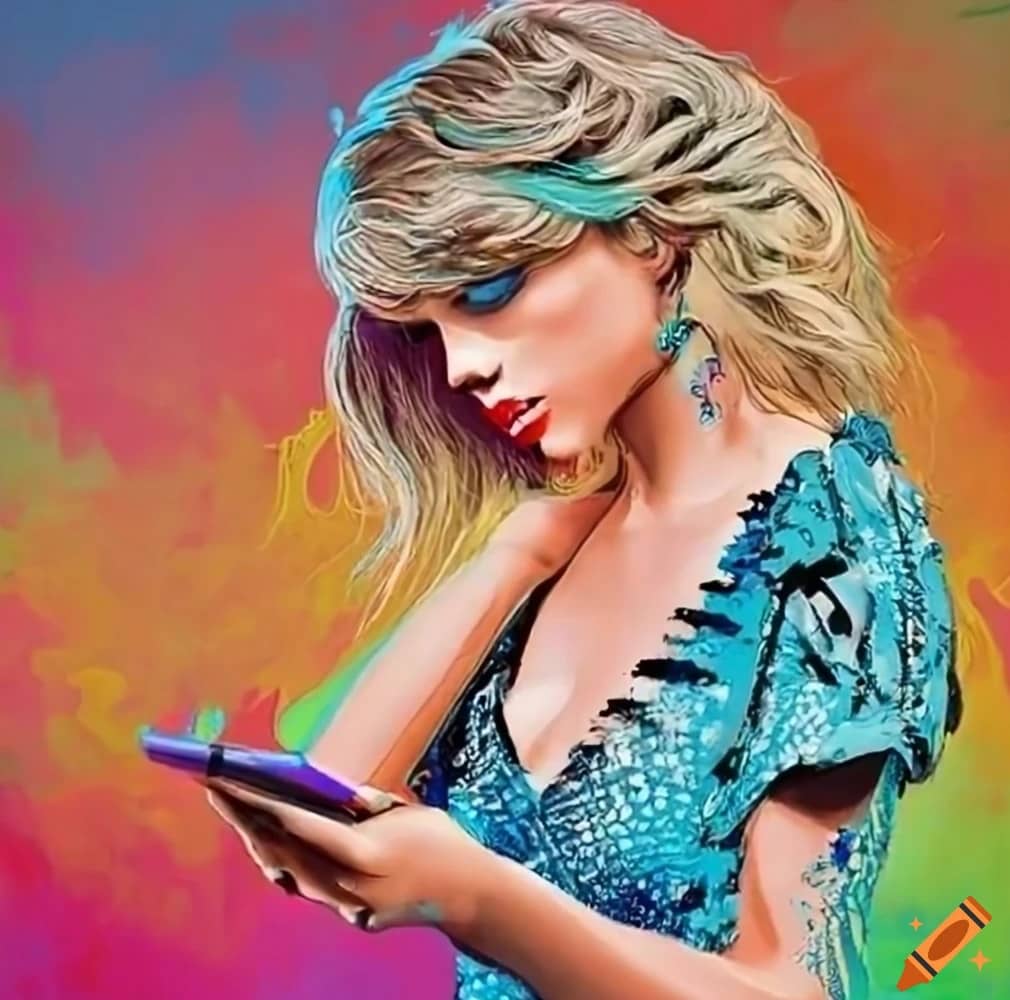Discover How Social Media has Changed Photography, The Role of Social Media on Photography, from changes in aesthetics and storytelling to its effects on the industry and ethical considerations. Explore Now!
The Impact of Social Media on Photography

In today’s digital age, photography and social media are inextricably linked. In The Role of Social Media on Photography, Social media platforms like Instagram, Facebook, and Snapchat have revolutionized how we take, share, and perceive photographs.
1. Evolution of Photography in the Social Media Era
- Pre-Social Media Photography

In The Evolution of Photography, Before the advent of social media, photography was primarily a physical medium. Photos were taken with film cameras, developed, and printed for albums or frames. The process was slower, and the sharing of photographs was limited to personal gatherings or physical exchanges.
- Introduction of Social Media Platforms

How Social Media Has Changed Photography, The rise of social media platforms marked a significant shift in photography. Platforms like Facebook (launched in 2004), Instagram (2010), and Snapchat (2011) offered new avenues for sharing photos instantaneously with a global audience. These platforms transformed photography from a personal activity into a communal and highly interactive experience.
- Smartphone Revolution
The proliferation of smartphones equipped with high-quality cameras has democratized photography. Today, nearly everyone has a powerful camera in their pocket, enabling them to capture and share moments instantly. This accessibility has led to an explosion of photographic content on social media.
2. Changes in Photography Due to Social Media
- Instant Sharing

One of the most significant changes brought about by social media is the shift from physical prints to instant digital sharing. Social media platforms allow users to upload and share photos with just a few taps, making it easier than ever to disseminate visual content. The Influence of Social Media on Photography is very much visible here!
- Content Creation
The Influence of Photography in Social Media, has given rise to a new breed of content creators and influencers who use photography to engage with their audiences. These individuals often set trends, influence public opinion, and drive engagement through their visually appealing and carefully curated content.
- Trends and Aesthetics

Social media platforms are trendsetters for photographic styles and aesthetics. Filters, hashtags, and viral challenges often dictate the visual trends of the moment. Popular aesthetics, such as the “Instagram look” characterized by bright, clean, and highly edited images, have emerged and influenced mainstream photography.
- User-Generated Content

The rise of user-generated content (UGC) has been a hallmark The Impact of Social Media on Photography. Ordinary users now have a platform to share their photos with a wide audience, contributing to a diverse and ever-growing pool of visual content. UGC also fosters community and engagement on social media platforms.
3. Social Media and the Photography Industry
- Professional Photographers
The Impact of Social Media on Photography, had a mixed impact on professional photographers. While it offers a platform for showcasing work and reaching potential clients, it has also increased competition and driven down prices due to the abundance of free content. However, those who leverage social media effectively can build strong personal brands and attract new business.
- Marketing and Branding

Photographers use social media for marketing and branding, sharing their portfolios, behind-the-scenes content, and personal stories to connect with their audience. Social media presence is crucial for photographers looking to establish their brand and reach a broader audience. This is the great way in the Influence of Photography in Social Media.
- Collaborations and Sponsorships
Social media has opened up opportunities for collaborations and sponsorships. Brands often collaborate with photographers and influencers to create visually appealing campaigns that resonate with their target audience. These partnerships can be lucrative and provide photographers with new avenues for creative expression.
4. The Impact on Visual Storytelling in Social Media

The Role Photography in Storytelling has revolutionized visual storytelling by democratizing content creation and distribution, allowing for more diverse voices and perspectives to be heard. Here are some key impacts of How Social Media Has Changed Photography in Visual Storytelling:
Accessibility and Democratization
- Wider Reach: Platforms like Instagram, TikTok, and Facebook have enabled anyone with a smartphone to share their stories with a global audience.
- Lower Barriers to Entry: High-quality cameras in smartphones and user-friendly editing tools have made it easier for people to produce professional-looking content.
Narrative Techniques
- Creative Thinking: The Influence of Photography in Social Media has the techniques used in photographic storytelling. The format of posts, stories, and reels requires photographers to think creatively about how to convey a narrative within the constraints of these platforms.
- Sequential Storytelling: Sequential storytelling has become popular on platforms like Instagram, where a series of photos tells a story which has The Impact of Social Media on Photography

Engagement and Interaction
The interactive nature of social media allows for greater engagement with photographic content. Users can comment, like, and share photos, creating a dialogue between photographers and their audience. This interaction enhances the storytelling experience and allows for immediate feedback.
- Real-Time Interaction: Social media allows for immediate feedback and interaction through comments, likes, and shares, making storytelling a more interactive and dynamic experience.
- User-Generated Content: Audiences can contribute their own stories and perspectives, creating a more participatory form of storytelling.
Diverse Storytelling Formats
- Short-Form Content: Platforms like TikTok and Instagram Stories prioritize short, engaging videos, changing how stories are told and consumed.
- Ephemeral Content: Stories that disappear after 24 hours encourage more spontaneous and authentic sharing.The rise of ephemeral content, such as Instagram Stories and Snapchat, has changed how photographers approach storytelling.
These temporary formats encourage spontaneity and authenticity, as the content disappears after a set period. This has led to a shift towards more candid and real-time photography.
Personalization and Niche Communities
- Tailored Content: Algorithms personalize content feeds, ensuring that users see stories relevant to their interests and preferences.
- Niche Communities: Social media fosters communities around specific interests, allowing for targeted storytelling that resonates deeply with particular groups.
Visual Aesthetics and Trends
- Aesthetic Evolution: Social media has popularized specific visual trends and aesthetics, such as the use of filters, particular color palettes, and specific styles of photography and videography.
- Influencer Culture: Influencers play a significant role in shaping visual trends and storytelling techniques, often setting standards for what is popular or aspirational.
Social and Political Impact
- Awareness and Activism: Visual storytelling on social media has been pivotal in raising awareness about social and political issues, mobilizing movements, and fostering global conversations.
- Empathy and Understanding: Personal stories shared through visual media can create empathy and understanding, bridging cultural and geographical divides.
Challenges and Considerations
- Misinformation and Authenticity: The ease of sharing visual content also raises concerns about misinformation and the authenticity of stories.
- Mental Health: The pressure to present a curated, idealized version of life can impact mental health, leading to issues like anxiety and depression.
In summary, social media has significantly transformed visual storytelling, making it more accessible, interactive, and diverse. However, it also introduces new challenges and ethical considerations that must be navigated carefully.
5. The Impact of Social Media on Technological Development
- Camera Technology
The Impact of Social Media on Photography have a huge Impact on Technological Development. The demands of social media have spurred innovations in camera technology. Smartphone manufacturers continually improve camera capabilities, including higher resolution sensors, better low-light performance, and advanced features like portrait mode and AI-enhanced photography.
- Editing Apps and Software

The popularity of social media has led to the development of numerous editing apps and software. These tools allow users to enhance their photos quickly and easily, adding filters, adjusting lighting, and applying effects to create visually appealing images.
In The Role of Social Media on Photography, Social media photographers widely use apps like VSCO, Snapseed, and Lightroom Mobile. So can Imagine How Social Media Has Changed Photography Forever!
- Technological Integration (AR and Filters)
Augmented reality (AR) and filters have become integral to social media photography. Platforms like Instagram and Snapchat offer a variety of filters that can transform ordinary photos into creative and engaging visual content. These tools allow for experimentation and personalization, making photography more fun and accessible.
- Augmented Reality (AR): AR features enhance visual storytelling by adding interactive elements to photos and videos.
- Artificial Intelligence (AI): AI tools help edit and curate content, making the creation process more efficient.
6. Social Media as a Platform for Social Progress
- Awareness and Activism
The Impact of Social Media on Photography has played a crucial role in raising awareness and promoting activism. Powerful images shared on platforms like Twitter and Instagram can bring attention to social issues, inspire action, and mobilize communities. Photography has become a tool for advocacy and change in the digital age.
- Viral Movements
Viral movements driven by powerful images have become common on social media. For example, the #BlackLivesMatter movement has been amplified by impactful photographs that document protests and injustices. These images spread rapidly, creating a sense of urgency and solidarity.
- Community Building
Photography on social media helps build communities around shared interests and causes. Groups and hashtags allow users to connect with like-minded individuals, fostering a sense of belonging and collective purpose. These communities often support and amplify each other’s work, creating a positive feedback loop.
7. Ethical Considerations of Photography in Social Media
Ethical considerations in photography on social media are crucial due to the platform’s global reach, the potential for misuse, and the impact on individuals and communities. Here are some key ethical considerations which may convey great Influence in The Impact of Social Media on Photography:
Ethical guidelines for social media in photography
- Privacy and Consent
Privacy and consent are critical issues in The Role of Social Media on Photography. Photographers must navigate the complexities of obtaining consent, especially when photographing in public or sensitive situations. Respecting individuals’ privacy and ensuring ethical practices are paramount.
- Authenticity vs. Manipulation
The balance between authenticity and manipulation is a key ethical consideration. While editing and filters can enhance photos, excessive manipulation can create unrealistic portrayals. Photographers must strive for authenticity and transparency to maintain trust with their audience.
- Photo Editing: Being transparent about photo editing and avoiding manipulation that alters the truthfulness of the image.
- Misrepresentation: Ensuring that images accurately represent the context and circumstances depicted.
Copyright and Ownership
Protecting photographers’ rights on social media platforms is challenging. Once a photo is shared online, it can be easily copied and redistributed without permission. Photographers must be vigilant about protecting their work and understanding the platform’s terms regarding copyright and ownership.
- Copyright: Respecting copyright laws and giving credit to photographers and creators.
- Commercialization: Being transparent about any commercial intent or sponsorship associated with shared images.
Representation and Respect
- Cultural Sensitivity: Respecting cultural norms and sensitivities when photographing diverse communities.
- Dignity: Portraying subjects in a respectful and dignified manner, avoiding stereotypes or exploitation.
Responsibility in Sharing
- Consent for Sharing: Ensuring that shared images respect the privacy and wishes of individuals depicted.
- Impact Awareness: Being aware of the potential impact of sharing images, especially in sensitive or vulnerable contexts.
Social and Political Impact
- Impact on Communities: Considering how images may affect public perceptions, stereotypes, or contribute to social change.
- Advocacy and Responsibility: Using photography to advocate for social justice while being mindful of unintended consequences.
Digital Literacy and Education
- Media Literacy: Promoting awareness among audiences about the ethics of consuming and sharing photographic content.
- Educational Initiatives: Supporting initiatives that promote ethical photography practices and digital citizenship.
Consent and Vulnerable Groups
Children and Vulnerable Individuals: Special considerations for photographing and sharing images of minors, vulnerable individuals, or marginalized groups.
Navigating these ethical considerations requires photographers and social media users to prioritize respect, consent, authenticity, and responsibility. Adhering to ethical guidelines helps in fostering a more ethical and respectful digital photography culture on social media platforms.
8. Future Trends in Social Media and Photography

- AI and Machine Learning
AI and machine learning are set to revolutionize social media photography. These technologies can automate editing, enhance image quality, and even generate new visual content. As AI continues to evolve, it will open up new possibilities for creativity and efficiency in photography.
- Immersive Technologies
Immersive technologies like virtual reality (VR) and augmented reality (AR) will play a significant role in the future of social media photography. These technologies offer new ways to create and experience visual content, making storytelling more interactive and immersive.
- Sustainability and Ethics
The growing focus on sustainability and ethics in photography will shape its future, Need to see How Social Media Has Changed Photography Forever! Photographers are increasingly considering the environmental and social impact of their work, adopting sustainable practices, and prioritizing ethical storytelling. This trend will likely continue as awareness and demand for responsible photography increase.
Frequently Asked Question
How has social media changed the way photographers share their work?
Social media has revolutionized the way photographers share their work by providing platforms like Instagram, Facebook, and Pinterest where they can instantly reach a global audience. These platforms facilitate easy sharing, immediate feedback, and broader visibility.
What are the most popular social media platforms for photographers?
The most popular social media platforms for photographers include Instagram, Facebook, Pinterest, 500px, and Flickr. Instagram is particularly favored for its visual focus and vast user base, making it ideal for showcasing photography.
How does social media influence the style and trends in photography?
Social media influences photography styles and trends by highlighting what is popular and widely shared. Photographers often adapt their work to fit the aesthetic that resonates with social media audiences, leading to trends like minimalism, vibrant colors, and certain types of compositions.
What are some benefits of using social media for photographers?
Benefits of using social media for photographers include increased exposure, networking opportunities, direct engagement with audiences, potential for viral content, and opportunities for collaborations and commercial work.
How can photographers build a strong presence on social media?
Photographers can build a strong social media presence by regularly posting high-quality content, engaging with followers through comments and messages, using relevant hashtags, collaborating with other photographers and influencers, and utilizing features like stories and reels.
What role do hashtags play in promoting photography on social media?
Hashtags play a crucial role in promoting photography on social media by categorizing content and making it discoverable to a wider audience. Using popular and niche-specific hashtags can help photographers reach potential followers and clients who are interested in their style or genre.
How does social media impact the business side of photography?
Social media impacts the business side of photography by serving as a powerful marketing tool. It allows photographers to showcase their portfolio, attract clients, sell prints, and promote services. It also enables direct communication and bookings through platforms.
What challenges do photographers face on social media?
Challenges faced by photographers on social media include standing out in a saturated market, dealing with algorithm changes that affect visibility, managing time spent on social media, and handling negative feedback or trolling.
How can photographers protect their work on social media?
Photographers can protect their work on social media by watermarking images, using copyright notices, adjusting privacy settings, and being vigilant about unauthorized use. They can also use platforms that offer digital rights management tools.
How has social media democratized photography?
Social media has democratized photography by making it accessible to anyone with a smartphone and an internet connection. It allows amateur photographers to share their work, gain recognition, and potentially turn their passion into a career without traditional gatekeepers.
What is the role of influencers in the photography community on social media?
Influencers in the photography community play a role in setting trends, promoting products, offering tutorials and advice, and inspiring other photographers. They often have large followings and can significantly impact the popularity of certain styles and techniques.
How do engagement metrics affect a photographer’s success on social media?
Engagement metrics such as likes, comments, shares, and saves affect a photographer’s success on social media by influencing visibility and reach. High engagement rates can lead to increased exposure, more followers, and potential business opportunities.
What impact does social media have on the creativity of photographers?
Social media can have both positive and negative impacts on photographers’ creativity. While it provides inspiration and community support, it can also create pressure to conform to trends and prioritize likes over artistic expression.
How can photographers use social media analytics to improve their performance?
Photographers can use social media analytics to track performance metrics, understand audience demographics, identify popular content, and adjust their strategies accordingly. This data-driven approach helps optimize posts and engagement.
What ethical considerations should photographers keep in mind when using social media?
Ethical considerations include respecting privacy, obtaining consent for sharing images of people, avoiding manipulation or misrepresentation of images, giving credit to collaborators, and maintaining authenticity in their work.
How does user-generated content influence photography on social media?
User-generated content influences photography on social media by showcasing diverse perspectives and encouraging community participation. It can also inspire trends and provide real-life examples of how photography is used and appreciated by everyday users.
How do algorithms on social media platforms affect photographers?
Algorithms on social media platforms affect photographers by determining the visibility of their posts. Changes in algorithms can impact reach and engagement, making it crucial for photographers to stay informed and adapt their strategies to maintain visibility.
What are some tips for using Instagram effectively as a photographer?
Tips for using Instagram effectively include posting consistently, using high-quality images, engaging with followers, using relevant hashtags, collaborating with other creators, utilizing stories and reels, and analyzing performance metrics to refine strategies.
How can photographers use social media to find and connect with clients?
Photographers can use social media to find and connect with clients by showcasing their portfolio, engaging with potential clients through comments and direct messages, using targeted hashtags, and promoting their services in posts and stories.
What is the future of photography on social media?
The future of photography on social media will likely involve more advanced technologies such as AI-driven curation, augmented reality (AR) features, and immersive experiences like 360-degree photos. The focus on authenticity and personal connection is also expected to grow, along with the continuous evolution of platform-specific trends and tools.
What is the impact of social media on Modern Photography?
Social media platforms like Instagram and Facebook have transformed how people take, share, and interact with photographs, emphasizing immediacy and social connectivity.
Conclusion
How Social Media Has Changed Photography, and has profoundly impacted photography, transforming how photos are taken, shared, and perceived. From instant sharing and user-generated content to new storytelling techniques and technological advancements, the influence of social media is undeniable. However, with these changes come important ethical considerations that photographers must navigate.







Recent Comments